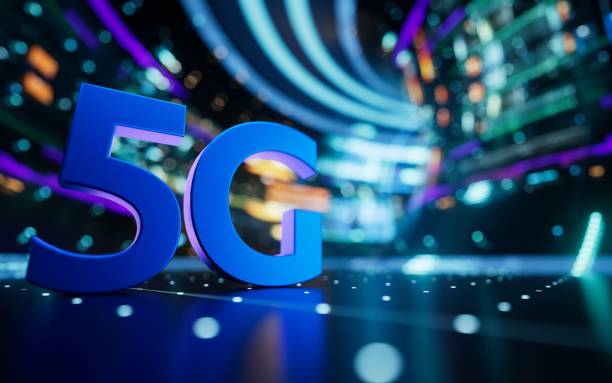The rise of 5G networks marks one of the most significant technological transformations of the 21st century. More than just an upgrade from previous generations of mobile networks, 5G represents a fundamental shift in how data is transmitted, processed, and utilized. Its impact extends far beyond faster mobile internet—it is reshaping the foundations of computing itself. The convergence of 5G with technologies like cloud computing, edge computing, artificial intelligence, and the Internet of Things (IoT) is ushering in a new era of connectivity and computation.
5G’s defining characteristics—ultra-high speed, extremely low latency, and massive device connectivity—enable capabilities that were previously impossible. As a result, 5G is not simply accelerating existing technologies but transforming how digital systems are designed, deployed, and experienced. It affects how data is processed, how decisions are made in real time, and how computing resources are distributed across networks. This transformation has deep implications for industries, economies, and everyday life.
The Evolution of Wireless Networks
To understand how 5G transforms computing, it is essential to recognize how mobile networks have evolved. Each generation of wireless technology has revolutionized data transmission and enabled new forms of communication.
The first generation (1G) introduced analog voice communication in the 1980s. The second generation (2G) brought digital voice and basic data services like SMS in the 1990s. The third generation (3G) added mobile internet, enabling email, browsing, and multimedia on the go. The fourth generation (4G) dramatically increased data rates, powering the rise of streaming, cloud services, and social media applications.
5G, however, is not merely a faster version of 4G. It represents a paradigm shift. While 4G networks achieved speeds of up to 100 megabits per second, 5G offers theoretical speeds exceeding 10 gigabits per second, along with latency as low as one millisecond. More importantly, it is designed to connect billions of devices simultaneously with high reliability and minimal delay. These attributes transform how and where computation occurs, leading to distributed, intelligent, and highly responsive computing systems.
Core Features of 5G Technology
5G technology is characterized by three main performance pillars: enhanced mobile broadband (eMBB), ultra-reliable low-latency communication (URLLC), and massive machine-type communication (mMTC). Together, these enable 5G to serve as the backbone for next-generation computing applications.
Enhanced mobile broadband supports high data rates for activities such as 4K video streaming, virtual reality, and cloud gaming. Ultra-reliable low-latency communication allows mission-critical systems—like autonomous vehicles, robotic surgery, and industrial automation—to function with near-instantaneous responsiveness. Massive machine-type communication enables the connection of millions of IoT devices per square kilometer, creating vast networks of sensors and intelligent machines that continuously exchange information.
These capabilities mean that 5G is not just about connecting people but about connecting things and enabling computation across a distributed ecosystem. Devices no longer merely consume data; they become active participants in data generation, analysis, and decision-making.
The Convergence of 5G and Computing
The integration of 5G into computing fundamentally changes where and how computation happens. In traditional models, most computing occurs in centralized data centers or cloud infrastructures. Data generated by devices travels through networks to distant servers for processing and storage, then returns to the user with the result. While effective for many applications, this approach introduces latency and consumes significant bandwidth.
5G changes this dynamic by enabling distributed computing architectures. With its low latency and high bandwidth, 5G allows computing resources to move closer to the source of data—what is known as edge computing. Instead of sending all data to the cloud, processing can occur near the device or within the network itself. This transformation decentralizes computation, creating an intelligent, responsive network infrastructure that integrates communication and processing seamlessly.
As a result, 5G networks are not simply data transport systems—they become computational platforms. The network itself participates in computation, hosting micro data centers and supporting real-time analytics, AI inference, and automation. This distributed intelligence defines a new era of networked computing.
5G and Edge Computing: The New Computational Frontier
Edge computing is one of the most profound ways in which 5G transforms the computing landscape. Edge computing refers to processing data near its source rather than relying entirely on remote cloud servers. It reduces latency, conserves bandwidth, and enhances data privacy by minimizing the transmission of sensitive information.
The low latency of 5G makes edge computing viable at a massive scale. Sensors, vehicles, cameras, and industrial machines can send data to nearby edge servers for immediate processing, allowing for instantaneous decision-making. For example, autonomous vehicles must process vast amounts of sensor data in real time to navigate safely. With 5G-enabled edge computing, critical computations—such as obstacle detection and route optimization—can be performed locally within milliseconds.
In manufacturing, edge computing supported by 5G enables smart factories where robotic systems communicate instantly and adapt dynamically to changing conditions. In healthcare, wearable sensors connected through 5G can transmit data to edge servers for rapid analysis, alerting physicians to irregularities in real time.
This distributed computational model blurs the line between devices, networks, and data centers. The result is a seamless computing continuum where processing occurs wherever it is most efficient—on the device, at the edge, or in the cloud.
Cloud Computing in the 5G Era
While 5G enhances edge computing, it also transforms cloud computing itself. Cloud platforms become faster, more responsive, and more accessible through the improved connectivity that 5G provides. The combination of cloud and 5G creates what many call the “cloud-edge continuum,” a unified infrastructure that delivers computational power dynamically across devices and locations.
In the 5G era, cloud computing evolves from centralized data centers to distributed architectures. Micro data centers can be deployed within 5G base stations or network nodes, allowing for localized cloud services with ultra-low latency. This distributed cloud supports applications such as real-time analytics, virtual reality streaming, and immersive collaboration tools.
Moreover, 5G enhances the scalability and flexibility of cloud resources. Enterprises can offload demanding tasks, like machine learning model training, to the cloud while performing time-sensitive inference at the edge. This hybrid computing model maximizes performance, efficiency, and reliability.
The synergy between 5G and cloud computing also accelerates innovations such as cloud gaming, augmented reality, and digital twins—virtual replicas of physical systems that require real-time synchronization between the physical and digital worlds. Without 5G, the seamless operation of such latency-sensitive, data-intensive applications would not be possible.
Artificial Intelligence and 5G: A Symbiotic Relationship
Artificial intelligence (AI) and 5G are deeply interconnected. AI enhances 5G network management, while 5G expands the capabilities of AI-driven systems. The enormous data flows generated by connected devices require intelligent processing and optimization. AI algorithms analyze traffic patterns, predict network congestion, and dynamically allocate bandwidth to ensure optimal performance.
Conversely, 5G networks provide the infrastructure needed for AI applications that rely on massive data exchange and real-time processing. Machine learning systems thrive on data, and 5G’s high capacity and low latency make it feasible to train and deploy AI models across distributed environments.
For instance, AI-powered autonomous systems, such as drones or robots, rely on continuous streams of data to perceive and respond to their surroundings. Through 5G, these systems can process information collaboratively across devices and edge servers, enhancing safety and efficiency. In smart cities, AI-driven traffic control systems use 5G to analyze sensor data instantly, adjusting signals and routes to prevent congestion.
The fusion of 5G and AI leads to what can be described as intelligent connectivity—a world where the network itself becomes adaptive, learning, and predictive. Such systems pave the way for a new generation of computing in which intelligence is embedded throughout the network fabric.
The Internet of Things and Hyperconnectivity
The Internet of Things (IoT) is one of the biggest beneficiaries of 5G. Previous network generations struggled to handle the massive number of devices envisioned in IoT ecosystems. 5G’s massive machine-type communication capability allows billions of sensors, appliances, vehicles, and machines to connect simultaneously, each transmitting data efficiently and reliably.
This scale of connectivity transforms computing by generating unprecedented volumes of real-time data. These data streams feed into edge and cloud computing infrastructures, enabling continuous analysis and automation. Smart homes, cities, factories, and healthcare systems become more responsive and self-regulating as a result.
In industrial IoT, for example, 5G networks connect robotic systems, conveyors, and sensors to a shared computational fabric. Machines coordinate production with millisecond precision, and predictive maintenance systems analyze equipment data to prevent failures. In agriculture, IoT devices connected through 5G monitor soil conditions, weather, and crop health, allowing farmers to optimize resources with data-driven precision.
The combination of 5G and IoT effectively creates a planetary nervous system—an interconnected web of devices, sensors, and computing nodes that continuously sense, think, and act.
Real-Time Computing and Latency Revolution
Latency—the time delay between sending and receiving data—has long been a limiting factor in computing. Traditional networks introduce delays that hinder real-time responsiveness. 5G dramatically reduces latency to as little as one millisecond, enabling near-instant communication between devices and systems.
This near-zero latency is transformative for applications requiring real-time feedback. In autonomous vehicles, milliseconds can mean the difference between safety and disaster. In remote surgery, latency determines whether a surgeon’s command is executed precisely and instantly. In virtual and augmented reality, low latency ensures seamless interaction without motion lag or disorientation.
Reducing latency also changes how distributed systems operate. Applications that once required local computing can now leverage remote resources without sacrificing performance. This opens possibilities for lightweight devices that rely on 5G-connected computation instead of powerful onboard hardware. For example, augmented reality glasses can offload intensive image processing to edge servers, reducing size, heat, and power consumption.
In this sense, 5G makes real-time computing ubiquitous. The network becomes fast enough that location ceases to be a barrier for computational tasks, effectively unifying the digital and physical worlds.
Network Slicing and Customized Computing Environments
One of 5G’s most innovative features is network slicing—the ability to create multiple virtual networks on a single physical infrastructure. Each slice can be tailored to the requirements of specific applications or users, with dedicated bandwidth, latency, and reliability characteristics.
This flexibility transforms computing by enabling customized network environments. For instance, an autonomous vehicle network can be configured for ultra-low latency and high reliability, while a streaming network can prioritize high throughput. Enterprises can deploy private 5G slices that integrate with their computing infrastructure, ensuring secure, high-performance connectivity for mission-critical operations.
Network slicing effectively extends virtualization—a key principle in cloud computing—to the communication layer. It allows for dynamic allocation of resources across distributed computing environments, optimizing performance for each application type. As a result, 5G networks become programmable, intelligent, and deeply integrated with computational processes.
Cybersecurity in the 5G Computing Era
As 5G expands the scale and complexity of connected systems, it also introduces new cybersecurity challenges. The increased number of devices, data streams, and access points creates a broader attack surface. Furthermore, the distributed nature of 5G-enabled computing—spanning edge nodes, clouds, and devices—requires rethinking security architectures.
However, 5G also provides new tools for enhancing cybersecurity. Its network slicing capability allows for the isolation of sensitive applications from public traffic. Advanced encryption and authentication mechanisms are built into the 5G standard to secure communications. Moreover, AI-driven threat detection can be integrated directly into the network, allowing for real-time identification and mitigation of attacks.
Secure computing in the 5G era relies on collaboration between network operators, device manufacturers, and cloud providers. Trust and transparency become essential, as computation becomes increasingly distributed and intertwined with communication networks. Ensuring security, privacy, and resilience will be critical for maintaining public confidence in 5G-powered computing systems.
5G and the Transformation of Industries
The impact of 5G on computing extends into virtually every sector of the economy. In healthcare, 5G enables telemedicine, remote surgery, and continuous patient monitoring with real-time data analysis. In manufacturing, it powers Industry 4.0—the integration of robotics, AI, and IoT into smart, adaptive production systems. In transportation, it underpins autonomous vehicles and intelligent traffic management.
In entertainment, 5G makes cloud gaming, augmented reality, and immersive media mainstream by eliminating lag and enabling high-resolution streaming. In education, it supports remote and virtual learning environments that feel as interactive as physical classrooms. In finance, 5G enables high-frequency trading, real-time risk assessment, and secure mobile banking.
These transformations share a common foundation: computing becomes mobile, distributed, and intelligent. Data is processed not in isolated data centers but across dynamic, interconnected networks that span the globe.
The Environmental and Energy Implications
The expansion of 5G networks raises important questions about energy consumption and environmental impact. The proliferation of connected devices and edge data centers could increase power demand. However, 5G’s efficiency improvements—such as better spectrum utilization and intelligent power management—can offset these effects.
Moreover, 5G-enabled computing can drive sustainability in other domains. Smart grids optimize energy distribution, smart transportation reduces emissions, and precision agriculture minimizes resource waste. The ability to collect and analyze data in real time enhances environmental monitoring and management, contributing to global sustainability goals.
Balancing the benefits of 5G with its environmental footprint will require innovations in energy-efficient computing, network design, and renewable energy integration.
The Human Dimension of the 5G Computing Revolution
Beyond technology, 5G transforms how humans interact with digital systems. It enables experiences that blend the physical and virtual worlds—augmented reality workplaces, immersive entertainment, and real-time collaboration across continents. It also raises ethical questions about privacy, automation, and digital dependence.
As computing becomes pervasive and invisible, humans will increasingly coexist with intelligent systems that anticipate needs and make decisions autonomously. Designing these systems responsibly—ensuring fairness, transparency, and human control—will be one of the defining challenges of the 5G era.
The Future of Computing in the 5G Era
The full potential of 5G-enabled computing is only beginning to unfold. As networks expand and mature, we will witness the emergence of ultra-connected ecosystems where computation is fluid, distributed, and context-aware. Future computing systems will not reside in single machines or data centers but in networks that span every device, sensor, and node.
Quantum computing, artificial intelligence, and advanced networking will converge with 5G to create systems capable of real-time, global-scale computation. These technologies will enable breakthroughs in medicine, climate science, robotics, and beyond. The ultimate vision is one of pervasive intelligence—an interconnected world where computation is as ubiquitous and natural as electricity.
Conclusion
5G networks are far more than an evolution of mobile communication; they are a revolution in the architecture of computing itself. By enabling ultra-fast, low-latency, and highly connected systems, 5G dissolves the boundaries between cloud, edge, and device. It transforms how data flows, how intelligence is distributed, and how humans and machines interact.
This transformation will redefine industries, economies, and everyday life. It will give rise to a computing paradigm that is decentralized, adaptive, and deeply integrated into the fabric of society. As we stand at the threshold of this new era, one truth becomes clear: 5G is not merely changing how we connect—it is changing how we compute, think, and live in the digital age.





